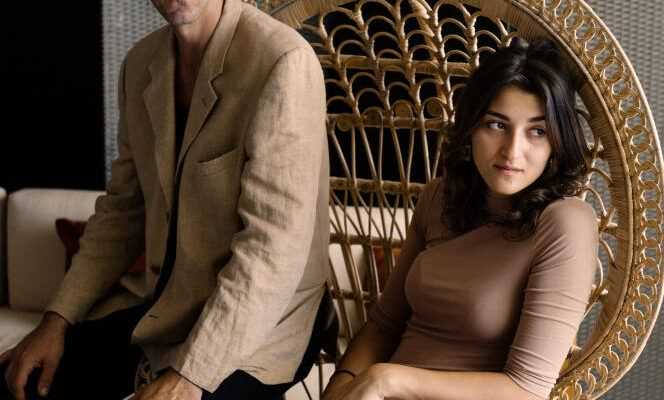Directors’ fortnight
Fortunately, after decades of narrative deconstruction there are still storytellers who like to tell in order to tell and for whom this essential act has remained a privileged access ramp to the world and its mysteries. Alessio Rigo de Righi and Matteo Zoppis, a duo of Italian-American directors born in 1986, are precisely those, focusing since their beginnings in 2013 on the abundant legacy of peasant folklore and transalpine oral tradition. Their first fiction feature film, The Legend of the Crab King, brilliantly attests to this and turns out to be one of the most astonishing objects seen at mid-Festival, by rediscovering this clarity of utterance and these enchanting shimmers specific to the register of the fable.
It is besides the storytelling in itself which constitutes the only motor of the film. And this from the beginning, which sees meeting in a small lost village of Tuscia, in Italy, where many Etruscan remains still lie, a band of old hunters seated at tables to tell each other stories. The one of the day, replayed like an old standard, concerns Luciano, a drunkard of the XIXe century remained famous for having challenged the local potentate. A first section attempts to trace the supporters of this insurrectionary gesture: it is because the Prince insisted on blocking the access to a shortcut appreciated by all the villagers, but along his domain, that the Saint Drinker with a crazy beard and a hazy gaze (the Roman artist Gabriele Silli, totally possessed by his role) ended up standing against him and setting fire to his barn.
But, before that, the directors take the time to portray him as Diogenes, dragging his thirst in rags, making the despair of his artisan father and the pleasure of gossipers of all stripes, telling anyone who wants to hear it (no one). , secretly loving young Emma (Maria Alexandra Lungu), the most beautiful shoot in the village.
Epic and feuilletonesque collection
The beauty of the film lies first and foremost in the reliability of its staging, which seeks to rediscover an immemorial popular soul in the forms of its tradition, the faces that are offered to the camera, but also the theaters of nature. where the story is anchored. Alessio Rigo de Righi and Matteo Zoppis tend neither towards the mystical realism of an Ermanno Olmi nor towards the profane rituality of a Pasolini, but show themselves infinitely sensitive to the signs and symbols which emanate from human existences, sown with omens and by chance.
The dense grain of the image, the sumptuous compositions of the frames, the pictoriality of the shots (Emma dressed as a floral virgin, coming out of a Masaccio canvas), complete the making of the film not only a joy for the eye, but a formidable aggregation of reality and imagination. The scene where Luciano and Emma embrace at the discretion of a lake whose surface bursts with sparkles, like so many reflections of their love, is one that will not be forgotten.
You have 36.88% of this article to read. The rest is for subscribers only.
